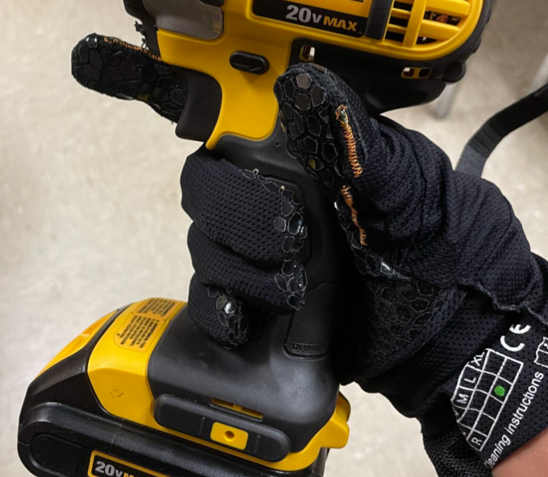SRNL Wearable Robotics Team Demonstrates Devices at DOE Sites
Savannah River National Laboratory’s (SRNL) Wearable Robotics Team travelled to the Department of Energy (DOE) Hanford Site in Washington to demonstrate and market wearable safety devices. Representatives from several other national laboratories were also on hand.
Sandia National Laboratory (SNL), headquarters for the DOE-wide wearable robotics collaboration, is conducting a study of the efficacy and comfort of wearable devices that reduce fatigue and strain during repetitive, manual tasks.
The attendees reviewed the ongoing study for a possible DOE wearables application. The application involves shoveling, which is a common, physically demanding task performed across the DOE complex.
The study’s preliminary results show that the muscle activity used during shoveling could be reduced with the use of wearable technologies while potentially transferring strain to muscles that are less vulnerable to injury.

SRNL Wearable Robotics Team members (left to right) Nick Spivey, Cami Kudrna and Rodrigo Ramon at the SRS safety expo (image: Nick Spivey, SRNL).
This lessens stress and fatigue and decreases the chance of injury. These results can be applied anywhere that conducts shoveling activities, including at Savannah River Site (SRS).
The primary device that SRNL showcased was the Ironhand device. The Ironhand device assists the fingers with repetitive, often difficult tactile manipulation. The team demonstrated how the device works and how it can provide assistance with a broad range of tasks typically encountered at DOE sites.
SRNL’s visit included an extensive tour of Pacific Northwest National Laboratory (PNNL). Industrial hygienists from several national labs and departments at PNNL were briefed on the use of the devices and their potential benefits.
Discussion topics included how the devices mesh with safety regulations and the extent to which they mitigate strain. The attendees also tackled the definition and classification of the devices as a whole.
“Is [the device] a safety item, is it an engineering control, is it administrative?” said SRNL team member Rodrigo Ramon. “So there was a lot of discussion on the semantics of the applications of these devices.”

The Ironhand device being used to assist with drilling (image: Nick Spivey, SRNL).
In addition to the Hanford visit, the SRNL team recently discussed the benefits of their devices at the SRS safety exposition in New Ellenton, SC.
Several groups from SRS expressed interest in using the team’s devices at their on-site locations and in their projects, including the Surplus Plutonium Disposition initiative.
The Hanford visit and SRS safety exposition come on the heels of a similar demonstration trip the team took to Oak Ridge National Laboratory earlier in 2024. That visit focused on devices that could be used for shoulder assistance with asbestos abatement work.
The devices and their demonstrations have been well received at each location the SRNL team has visited. This was especially the case for the Ironhand at Hanford.
“The visit was very successful in terms of getting people interested and aware of the device,” said Ramon.
The SRNL team consists of Ramon, Cami Kudrna, Tanner Goins, Rick Minichan and team lead Nick Spivey. It hopes to expand the number of device users and applications both at SRS and across the DOE complex, as well as follow up for further project development at Hanford and ORNL.
As the number of places and people using the devices expands, so will their safety and comfort on the job.

A wearables demonstration participant using the Chairless Chair and shoulderX devices (image: Nick Spivey, SRNL)